
A | B | C | D | E | F | G | H | CH | I | J | K | L | M | N | O | P | Q | R | S | T | U | V | W | X | Y | Z | 0 | 1 | 2 | 3 | 4 | 5 | 6 | 7 | 8 | 9
| Part of a series on |
| Organised labour |
|---|
 |
| Part of a series on |
| Socialism in the United Kingdom |
|---|
 |
The Labour Party is a political party in the United Kingdom that has been described as an alliance of social democrats, democratic socialists, and trade unionists.[20] The Labour Party sits on the centre-left of the political spectrum. In all general elections since 1922, Labour has been either the governing party or the Official Opposition. There have been six Labour prime ministers and thirteen Labour ministries. Since the 2010 general election, it has been the second-largest UK political party by the number of votes cast, behind the Conservative Party and ahead of the Liberal Democrats. The party holds the annual Labour Party Conference.
The party was founded in 1900, having grown out of the trade union movement and socialist parties of the 19th century. It overtook the Liberal Party to become the main opposition to the Conservative Party in the early 1920s, forming two minority governments under Ramsay MacDonald in the 1920s and early 1930s. Labour served in the wartime coalition of 1940–1945, after which Clement Attlee's Labour government established the National Health Service and expanded the welfare state from 1945 to 1951. Under Harold Wilson and James Callaghan, Labour again governed from 1964 to 1970 and 1974 to 1979. In the 1990s, Tony Blair took Labour to the centre as part of his New Labour project which governed under Blair and then Gordon Brown from 1997 to 2010.
The Labour Party currently forms the Official Opposition in the Parliament of the United Kingdom, having won the second-largest number of seats in the 2019 general election. The leader of the party and leader of the opposition is Keir Starmer. Labour is the largest party in the Senedd (Welsh Parliament), being the only party in the current Welsh government. The party is the third-largest in the Scottish Parliament, behind the Scottish National Party and the Scottish Conservatives. Labour is a member of the Party of European Socialists and Progressive Alliance, and holds observer status in the Socialist International. The party includes semi-autonomous London, Scottish, Welsh, and Northern Irish branches; however, it supports the Social Democratic and Labour Party (SDLP) in Northern Ireland, while still organising there. As of March 2024[update], Labour has around 366,604 registered members.
History
Origins and the Independent Labour Party (1860–1900)

The Labour Party originated in the late 19th century, meeting the demand for a new political party to represent the interests and needs of the urban working class, a demographic which had increased in number, and many of whom only gained suffrage with the passage of the Representation of the People Act 1884.[21] Some members of the trades union movement became interested in moving into the political field, and after further extensions of the voting franchise in 1867 and 1885, the Liberal Party endorsed some trade-union sponsored candidates. The first Lib–Lab candidate to stand was George Odger in the Southwark by-election of 1870. In addition, several small socialist groups had formed around this time, with the intention of linking the movement to political policies. Among these were the Independent Labour Party (ILP), the intellectual and largely middle-class Fabian Society, the Marxist Social Democratic Federation[22] and the Scottish Labour Party.
At the 1895 general election, the ILP put up 28 candidates but won only 44,325 votes. Keir Hardie, the leader of the party, believed that to obtain success in parliamentary elections, it would be necessary to join with other left-wing groups. Hardie's roots as a lay preacher contributed to an ethos in the party which led to the comment by 1950s General Secretary Morgan Phillips that "Socialism in Britain owed more to Methodism than Marx".[23]
Labour Representation Committee (1900–1906)

In 1899, a Doncaster member of the Amalgamated Society of Railway Servants, Thomas R. Steels, proposed in his union branch that the Trade Union Congress call a special conference to bring together all left-wing organisations and form them into a single body that would sponsor Parliamentary candidates. The motion was passed at all stages by the TUC, and the proposed conference was held at the Congregational Memorial Hall on Farringdon Street, London on 26 and 27 February 1900. The meeting was attended by a broad spectrum of working-class and left-wing organisations—the trades unions present represented almost half of the membership of the TUC.[24]
After a debate, the 129 delegates passed Hardie's motion to establish "a distinct Labour group in Parliament, who shall have their own whips, and agree upon their policy, which must embrace a readiness to cooperate with any party which for the time being may be engaged in promoting legislation in the direct interests of labour."[25] This created an association called the Labour Representation Committee (LRC), meant to co-ordinate attempts to support MPs sponsored by trade unions and represent the working-class population.[2] It had no single leader, and in the absence of one, the Independent Labour Party nominee Ramsay MacDonald was elected as Secretary. He had the difficult task of keeping the various strands of opinions in the LRC united. The 1900 general election, also referred to as the "Khaki election", came too soon for the new party to campaign effectively and total expenses for the election only came to £33.[26] Only 15 candidatures were sponsored, but two were successful: Keir Hardie in Merthyr Tydfil and Richard Bell in Derby.[27]
Support for the LRC was boosted by the 1901 Taff Vale Case, a dispute between strikers and a railway company that ended with the union being ordered to pay £23,000 damages for a strike. The judgement effectively made strikes illegal, since employers could recoup the cost of lost business from the unions. The apparent acquiescence of the Conservative Government of Arthur Balfour to industrial and business interests (traditionally the allies of the Liberal Party in opposition to the Conservatives' landed interests) intensified support for the LRC against a government that appeared to have little concern for the industrial proletariat and its problems.[27]

In the 1906 general election, the LRC won 29 seats [28] — helped by a secret 1903 pact between Ramsay MacDonald and Liberal Chief Whip Herbert Gladstone that aimed to avoid splitting the opposition vote between Labour and Liberal candidates in the interest of removing the Conservatives from office.[27]
In their first meeting after the election the group's members of Parliament decided to adopt the name "The Labour Party" formally (15 February 1906). Keir Hardie, who had taken a leading role in getting the party established, was elected as Chairman of the Parliamentary Labour Party (in effect, the leader), although only by one vote over David Shackleton after several ballots. In the party's early years the Independent Labour Party (ILP) provided much of its activist base as the party did not have individual membership until 1918 but operated as a conglomerate of affiliated bodies. The Fabian Society provided much of the intellectual stimulus for the party. One of the first acts of the new Liberal Government was to reverse the Taff Vale judgement.[27]
The People's History Museum in Manchester holds the minutes of the first Labour Party meeting in 1906 and has them on display in the Main Galleries.[29] Also within the museum is the Labour History Archive and Study Centre, which holds the collection of the Labour Party, with material ranging from 1900 to the present day.[30]
Early years (1906–1923)
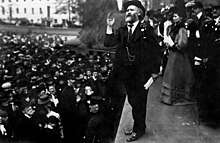
In 1907 the new party held its first annual conference in Belfast, a city in which Hardie in 1905 had served as an LRC election agent for William Walker. Despite Walker's election to the party executive, the connection with the north of Ireland was brief. At the height of the Home Rule Crisis in 1913, the party, in deference to the Irish Labour Party, decided not to stand candidates in Ireland, a policy the party maintained after partition in 1921.[31] Labour was to be a British, not a United Kingdom, party.
The Belfast conference itself was remembered for first raising the question of whether sovereignty lay with the annual conference, as in the inherited tradition of trade union democracy, or with the PLP.[32] Hardie shocked the delegates in the closing session by threatening to resign from the PLP over an amendment to a resolution on equal suffrage for women that would have bound MPs to oppose any compromise legislation that would extend votes to women on the basis of the existing property franchise. The PLP defused the crisis by allowing Hardie to vote as he wished on the subject. The precedent became the basis of a "conscience clause" in its standing orders, and would be invoked by party leader Michael Foot in 1981 to argue that the will of the conference should not always bind the PLP.[33]
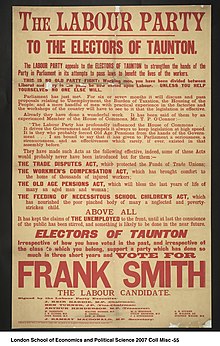
The December 1910 general election saw 42 Labour MPs elected to the House of Commons, a significant victory since, a year before the election, the House of Lords had passed the Osborne judgment ruling that trade union members would have to 'opt in' to sending contributions to Labour, rather than their consent being presumed. The governing Liberals were unwilling to repeal this judicial decision with primary legislation. The height of Liberal compromise was to introduce a wage for members of Parliament to remove the need to involve the trade unions. By 1913, faced with the opposition of the largest trade unions, the Liberal government passed the Trade Disputes Act to allow unions to fund Labour MPs once more without seeking the express consent of their members.
During the First World War, the Labour Party split between supporters and opponents of the conflict; however, opposition to the war grew within the party as time went on. Ramsay MacDonald, a notable anti-war campaigner, resigned as leader of the Parliamentary Labour Party and Arthur Henderson became the main figure of authority within the party. He was soon accepted into Prime Minister H. H. Asquith's war cabinet, becoming the first Labour Party member to serve in government. Despite mainstream Labour Party's support for the coalition the Independent Labour Party was instrumental in opposing conscription through organisations such as the Non-Conscription Fellowship while a Labour Party affiliate, the British Socialist Party, organised a number of unofficial strikes.[34] Arthur Henderson resigned from the Cabinet in 1917 amid calls for party unity to be replaced by George Barnes. The growth in Labour's local activist base and organisation was reflected in the elections following the war, the co-operative movement now providing its own resources to the Co-operative Party after the armistice. The Co-operative Party later reached an electoral agreement with the Labour Party.
At the end of the First World War, the Government was attempting to provide support for the newly re-established Poland against Soviet Russia. Henderson sent telegrams to all local Labour Party organisations to ask them to organise demonstrations against supporting Poland, later forming the Council of Action, to further organise strikes and protests. Due to the number of demonstrations and the potential industrial impact across the country, Churchill and the Government was forced to end support for the Polish war effort.[35]
Henderson turned his attention to building a strong constituency-based support network for the Labour Party. Previously, it had little national organisation, based largely on branches of unions and socialist societies. Working with Ramsay MacDonald and Sidney Webb, Henderson established a national network of constituency organisations in 1918. They operated separately from trade unions and the National Executive Committee and were open to everyone sympathetic to the party's policies. Secondly, Henderson secured the adoption of a comprehensive statement of party policies, as drafted by Sidney Webb. Entitled "Labour and the New Social Order", it remained the basic Labour platform until 1950. It proclaimed a socialist party whose principles included a guaranteed minimum standard of living for everyone, nationalisation of industry, and heavy taxation of large incomes and of wealth.[36] It was in 1918 that Clause IV, as drafted by Sidney Webb, was adopted into Labour's constitution, committing the party to work towards "the common ownership of the means of production, distribution and exchange". With the Representation of the People Act 1918, almost all adult men (excepting only peers, criminals and lunatics) and most women over the age of thirty were given the right to vote, almost tripling the British electorate at a stroke, from 7.7 million in 1912 to 21.4 million in 1918. This set the scene for a surge in Labour representation in parliament.[37] The Communist Party of Great Britain was refused affiliation to the Labour Party between 1921 and 1923.[38]
Meanwhile, the Liberal Party declined rapidly, and the party also suffered a catastrophic split which allowed the Labour Party to gain much of the Liberals' support.[39] With the Liberals thus in disarray, Labour won 142 seats in 1922, making it the second-largest political group in the House of Commons and the official opposition to the Conservative government. After the election Ramsay MacDonald was voted the first official leader of the Labour Party.
First Labour government and period in opposition (1923–1929)
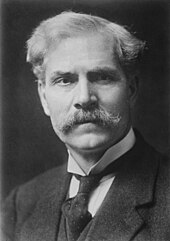
The 1923 general election was fought on the Conservatives' protectionist proposals, but although they got the most votes and remained the largest party, they lost their majority in parliament, necessitating the formation of a government supporting free trade. Thus, with the acquiescence of Asquith's Liberals, Ramsay MacDonald became the first ever Labour Prime Minister in January 1924, forming the first Labour government, despite Labour only having 191 MPs (less than a third of the House of Commons). The most significant achievement of the first Labour government was the Wheatley Housing Act, which began a building programme of 500,000 municipal houses for rental to low paid workers. Legislation on education, unemployment, social insurance and tenant protection was also passed. However, because the government had to rely on the support of the Liberals it was unable to implement many of its more contentious policies such as nationalisation of the coal industry, or a capital levy. Although no radical changes were introduced, Labour demonstrated that they were capable of governing.[40]
While there were no major labour strikes during his term, MacDonald acted swiftly to end those that did erupt. When the Labour Party executive criticised the government, he replied that, "public doles, Poplarism local defiance of the national government, strikes for increased wages, limitation of output, not only are not Socialism, but may mislead the spirit and policy of the Socialist movement."[41][42]
The government collapsed after only ten months when the Liberals voted for a Select Committee inquiry into the Campbell Case, a vote which MacDonald had declared to be a vote of confidence. The ensuing 1924 general election saw the publication, four days before polling day, of the forged Zinoviev letter, in which Moscow talked about a Communist revolution in Britain. The letter had little impact on the Labour vote—which held up. It was the collapse of the Liberal party that led to the Conservative landslide. The Conservatives were returned to power although Labour increased its vote from 30.7% to a third of the popular vote, most Conservative gains being at the expense of the Liberals. However, many Labourites blamed for years their defeat on foul play (the Zinoviev letter), thereby according to A. J. P. Taylor misunderstanding the political forces at work and delaying needed reforms in the party.[43][44]
In opposition, MacDonald continued his policy of presenting the Labour Party as a moderate force. The party opposed the 1926 general strike, arguing that the best way to achieve social reforms was through the ballot box. The leaders were also fearful of Communist influence orchestrated from Moscow.[45] The party had a distinctive and suspicious foreign policy based on pacifism. Its leaders believed that peace was impossible because of capitalism, secret diplomacy, and the trade in armaments. That is it stressed material factors that ignored the psychological memories of the Great War, and the highly emotional tensions regarding nationalism and the boundaries of the countries.[46][47]
Second Labour government (1929–1931)
In the 1929 general election, the Labour Party became the largest in the House of Commons for the first time, with 287 seats and 37.1% of the popular vote. However MacDonald was still reliant on Liberal support to form a minority government. MacDonald went on to appoint Britain's first woman cabinet minister; Margaret Bondfield, who was appointed Minister of Labour.[48] MacDonald's second government was in a stronger parliamentary position than his first, and in 1930 Labour was able to pass legislation to raise unemployment pay, improve wages and conditions in the coal industry (i.e. the issues behind the General Strike) and pass a housing act which focused on slum clearances.[49]
The government soon found itself engulfed in crisis as the Wall Street Crash of 1929 and eventual Great Depression occurred soon after the government came to power, and the slump in global trade hit Britain hard. By the end of 1930 unemployment had doubled to over two and a half million.[50] The government had no effective answers to the deteriorating financial situation, and by 1931 there was much fear that the budget was unbalanced, which was born out by the independent May Report which triggered a confidence crisis and a run on the pound. The cabinet deadlocked over its response, with several influential members unwilling to support the budget cuts (in particular a cut in the rate of unemployment benefit) which were pressed by the civil service and opposition parties. Chancellor of the Exchequer Philip Snowden refused to consider deficit spending or tariffs as alternative solutions. When a final vote was taken, the Cabinet was split 11–9 with a minority, including many political heavyweights such as Arthur Henderson and George Lansbury, threatening to resign rather than agree to the cuts. The unworkable split, on 24 August 1931, made the government resign. MacDonald was encouraged by King George V to form an all-party National Government to deal with the immediate crisis.[51][52]
The financial crisis grew worse, and decisive government action was needed, as the leaders of both the Conservative Party and the Liberal Party met with King George V and MacDonald, at first to discuss support for the spending cuts but later to discuss the shape of the next government. The king played the central role in demanding a National government be formed. On 24 August, MacDonald agreed to form a National Government composed of men from all parties with the specific aim of balancing the Budget and restoring confidence. The new cabinet had four Labourites (who formed a National Labour group) who stood with MacDonald, plus four Conservatives (led by Baldwin, Chamberlain) and two Liberals. MacDonald's moves aroused great anger among a large majority of Labour Party activists who felt betrayed. Labour unions were strongly opposed and the Labour Party officially repudiated the new National government. It expelled MacDonald and his supporters and made Henderson the leader of the main Labour party. Henderson led it into the general election on 27 October against the three-party National coalition. It was a disaster for Labour, which was reduced to a small minority of 52 seats. The Conservative-dominated National Government, led by MacDonald, won the largest landslide in British political history.[53]
In 1931, Labour campaigned on opposition to public spending cuts, but found it difficult to defend the record of the party's former government and the fact that most of the cuts had been agreed before it fell. Historian Andrew Thorpe argues that Labour lost credibility by 1931 as unemployment soared, especially in coal, textiles, shipbuilding, and steel. The working class increasingly lost confidence in the ability of Labour to solve the most pressing problem.[54] The 2.5 million Irish Catholics in England and Scotland were a major factor in the Labour base in many industrial areas. The Catholic Church had previously tolerated the Labour Party, and denied that it represented true socialism. However, the bishops by 1930 had grown increasingly alarmed at Labour's policies toward Communist Russia, toward birth control and especially toward funding Catholic schools. The Catholic shift against Labour and in favour of the National government played a major role in Labour's losses.[55]
Labour in opposition (1931–1940)
Arthur Henderson, elected in 1931 to succeed MacDonald, lost his seat in the 1931 general election. The only former Labour cabinet member who had retained his seat, the pacifist George Lansbury, accordingly became party leader.
The party experienced another split in 1932 when the Independent Labour Party, which for some years had been increasingly at odds with the Labour leadership, opted to disaffiliate from the Labour Party and embarked on a long, drawn-out decline.
Lansbury resigned as leader in 1935 after public disagreements over foreign policy. As of 2023[update], he is the only Labour leader to stand down from the role without contesting a general election (excluding acting leaders).[a] He was promptly replaced as leader by his deputy, Clement Attlee, who would lead the party for two decades. The party experienced a revival in the 1935 general election, winning 154 seats and 38% of the popular vote, the highest that Labour had achieved.[56]
As the threat from Nazi Germany increased, in the late 1930s the Labour Party gradually abandoned its pacifist stance and came to support re-armament, largely due to the efforts of Ernest Bevin and Hugh Dalton, who by 1937 had also persuaded the party to oppose Neville Chamberlain's policy of appeasement.[50]
Wartime coalition (1940–1945)
The party returned to government in 1940 as part of the wartime coalition. When Neville Chamberlain resigned in the spring of 1940, incoming Prime Minister Winston Churchill decided to bring the other main parties into a coalition similar to that of the First World War. Clement Attlee was appointed Lord Privy Seal and a member of the war cabinet, eventually becoming the United Kingdom's first Deputy Prime Minister.
A number of other senior Labour figures also took up senior positions: the trade union leader Ernest Bevin, as Minister of Labour, directed Britain's wartime economy and allocation of manpower, the veteran Labour statesman Herbert Morrison became Home Secretary, Hugh Dalton was Minister of Economic Warfare and later President of the Board of Trade, while A. V. Alexander resumed the role he had held in the previous Labour Government as First Lord of the Admiralty.
Attlee government (1945–1951)

At the end of the war in Europe, in May 1945, Labour resolved not to repeat the Liberals' error of 1918, promptly withdrawing from government, on trade union insistence, to contest the 1945 general election in opposition to Churchill's Conservatives. Surprising many observers,[57] Labour won a landslide victory, winning just under 50% of the vote with a majority of 159 seats.[58]
Attlee's government proved one of the most radical British governments of the 20th century, enacting Keynesian economic policies, presiding over a policy of nationalising major industries and utilities including the Bank of England, coal mining, the steel industry, electricity, gas, and inland transport (including railways, road haulage and canals). It developed and implemented the "cradle to grave" welfare state conceived by the economist William Beveridge.[59][60][61] To this day, most people in the United Kingdom see the 1948 creation of Britain's National Health Service (NHS) under health minister Aneurin Bevan, which gave publicly funded medical treatment for all, as Labour's proudest achievement.[62] Attlee's government also began the process of dismantling the British Empire when it granted independence to India and Pakistan in 1947, followed by Burma (Myanmar) and Ceylon (Sri Lanka) the following year. At a secret meeting in January 1947, Attlee and six cabinet ministers, including Foreign Secretary Ernest Bevin, decided to proceed with the development of Britain's nuclear weapons programme,[50] in opposition to the pacifist and anti-nuclear stances of a large element inside the Labour Party.
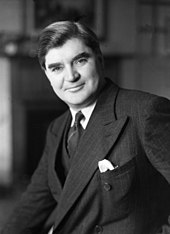
Labour went on to win the 1950 general election, but with a much-reduced majority of five seats. Soon afterwards, defence became a divisive issue within the party, especially defence spending (which reached a peak of 14% of GDP in 1951 during the Korean War),[63] straining public finances and forcing savings elsewhere. The Chancellor of the Exchequer, Hugh Gaitskell, introduced charges for NHS dentures and spectacles, causing Bevan, along with Harold Wilson (then President of the Board of Trade), to resign over the dilution of the principle of free treatment on which the NHS had been established.
In the 1951 general election, Labour narrowly lost to Churchill's Conservatives, despite receiving the larger share of the popular vote – its highest ever vote numerically. Most of the changes introduced by the 1945–51 Labour government were accepted by the Conservatives and became part of the "post-war consensus" that lasted until the late 1970s. Food and clothing rationing, however, still in place since the war, were swiftly relaxed, then abandoned from about 1953.[56]
Post-war consensus (1951–1964)
Following the defeat of 1951, the party spent 13 years in opposition. The party suffered an ideological split, between the party's left-wing followers of Aneurin Bevan (known as Bevanites) and the right-wing of the party following Hugh Gaitskell (known as Gaitskellites) while the postwar economic recovery and the social effects of Attlee's reforms made the public broadly content with the Conservative governments of the time. The ageing Attlee contested his final general election in 1955, which saw Labour lose ground, and he retired shortly after.
Under his replacement, Hugh Gaitskell, Labour appeared more united than before and had been widely expected to win the 1959 general election, but did not. Following this internal party infighting resumed, particularly over the issues of nuclear disarmament, Britain's entry into the European Economic Community (EEC) and Clause IV of the Labour Party Constitution, which was viewed as Labour's commitment to nationalisation which Gaitskell wanted scrapped. These issues would continue to divide the party for decades to come.[64][65]
Gaitskell died suddenly in 1963, and this made way for Harold Wilson to lead the party.[66]
Wilson government (1964–1970)
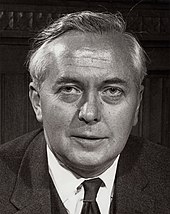
A downturn in the economy and a series of scandals in the early 1960s (the most notorious being the Profumo affair) had engulfed the Conservative government by 1963. The Labour Party returned to government with a 4-seat majority under Wilson[67] in the 1964 general election[68] but increased its majority to 96 in the 1966 general election.[69]
Wilson's government was responsible for a number of sweeping social and educational reforms under the leadership of Home Secretary Roy Jenkins such as the abolishment of the death penalty in 1965,[70] the legalisation of abortion[71][72] and homosexuality[73] (initially only for men aged 21 or over, and only in England and Wales) in 1967 and the abolition of theatre censorship in 1968.[74][75] Wilson's government also put heavy emphasis on expanding opportunities through education, and as such, comprehensive education was expanded and the Open University created.[76]
Wilson's first period as Prime Minister coincided with a period of relatively low unemployment and economic prosperity, it was however hindered by significant problems with a large trade deficit which it had inherited from the previous government. The first three years of the government were spent in an ultimately doomed attempt to stave off the continued devaluation of the pound. Labour went on to unexpectedly lose the 1970 general election to the Conservatives under Edward Heath.[77]
Spell in opposition (1970–1974)
After losing the 1970 general election, Labour returned to opposition, but retained Harold Wilson as Leader. Heath's government soon ran into trouble over Northern Ireland and a dispute with miners in 1973 which led to the "three-day week". The 1970s proved a difficult time to be in government for both the Conservatives and Labour due to the 1973 oil crisis, which caused high inflation and a global recession.
The Labour Party was returned to power again under Wilson a few days after the February 1974 general election, forming a minority government with the support of the Ulster Unionists.[78][79][80] The Conservatives were unable to form a government alone, as they had fewer seats despite receiving more votes numerically. It was the first general election since 1924 in which both main parties had received less than 40% of the popular vote and the first of six successive general elections in which Labour failed to reach 40% of the popular vote.[81] In a bid to gain a majority, a second election was soon called for October 1974 in which Labour, still with Harold Wilson as leader, won a slim majority of three, gaining just 18 seats taking its total to 319.[82]
Majority to minority (1974–1979)
For much of its time in office the Labour government struggled with serious economic problems and a precarious majority in the Commons, while the party's internal dissent over Britain's membership of the European Economic Community, which Britain had entered under Edward Heath in 1972, led in 1975 to a national referendum on the issue in which two thirds of the public supported continued membership. Harold Wilson's personal popularity remained reasonably high but he unexpectedly resigned as Prime Minister in 1976 citing health reasons, and was replaced by James Callaghan. The Wilson and Callaghan governments of the 1970s tried to control inflation (which reached 23.7% in 1975[83]) by a policy of wage restraint. This was fairly successful, reducing inflation to 7.4% by 1978.[27][83] However it led to increasingly strained relations between the government and the trade unions.
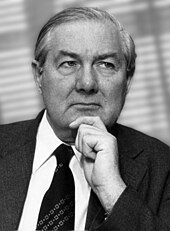
Fear of advances by the nationalist parties, particularly in Scotland, led to the suppression of a report from Scottish Office economist Gavin McCrone that suggested that an independent Scotland would be "chronically in surplus".[84] By 1977 by-election losses and defections to the breakaway Scottish Labour Party left Callaghan heading a minority government, forced to do deals with smaller parties in order to govern. An arrangement negotiated in 1977 with Liberal leader David Steel, known as the Lib–Lab pact, ended after one year. Deals were then forged with various small parties including the Scottish National Party (SNP) and the Welsh nationalist Plaid Cymru, prolonging the life of the government.
The nationalist parties, in turn, demanded devolution to their respective constituent countries in return for their supporting the government. When referendums for Scottish and Welsh devolution were held in March 1979 the Welsh devolution referendum saw a large majority vote against, while the Scottish referendum returned a narrow majority in favour without reaching the required threshold of 40% support. When the Labour government duly refused to push ahead with setting up the proposed Scottish Assembly, the SNP withdrew its support for the government: this finally brought the government down as the Conservatives triggered a vote of confidence in Callaghan's government that was lost by a single vote on 28 March 1979, necessitating a general election.
By 1978, the economy had started to show signs of recovery, with inflation falling to single digits, unemployment falling, and living standards starting to rise during the year.[85] Labour's opinion poll ratings also improved, with most showing the party to be in the lead.[27] Callaghan had been widely expected to call a general election in the autumn of 1978 to take advantage of the improving situation. In the event, he decided to gamble that extending the wage restraint policy for another year would allow the economy to be in better shape for a 1979 election. However this proved unpopular with the trade unions, and during the winter of 1978–79 there were widespread strikes among lorry drivers, railway workers, car workers and local government and hospital workers in favour of higher pay-rises that caused significant disruption to everyday life. These events came to be dubbed the "Winter of Discontent".
These industrial disputes sent the Conservatives now led by Margaret Thatcher into the lead in the polls, which led to Labour's defeat in the 1979 general election. The Labour vote held up in the election, with the party receiving nearly the same number of votes than in 1974. However, the Conservative Party achieved big increases in support in the Midlands and South of England, benefiting from both a surge in turnout and votes lost by the ailing Liberals.
Opposition and internal conflict (1979–1994)
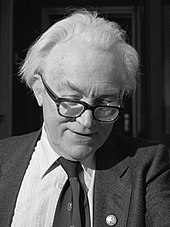
After its defeat in the 1979 general election the Labour Party underwent a period of internal rivalry between the left represented by Tony Benn, and the right represented by Denis Healey. The election of Michael Foot as leader in 1980, and the leftist policies he espoused, such as unilateral nuclear disarmament, leaving the European Economic Community and NATO, closer governmental influence in the banking system, the creation of a national minimum wage and a ban on fox hunting[86] led in 1981 to four former cabinet ministers from the right of the Labour Party (Shirley Williams, Bill Rodgers, Roy Jenkins and David Owen) forming the Social Democratic Party.[87] Benn was only narrowly defeated by Healey in a bitterly fought deputy leadership election in 1981 after the introduction of an electoral college intended to widen the voting franchise to elect the leader and their deputy. By 1982, the National Executive Committee had concluded that the entryist Militant tendency group were in contravention of the party's constitution.
The Labour Party was defeated heavily in the 1983 general election, winning only 27.6% of the vote, its lowest share since 1918, and receiving only half a million votes more than the SDP-Liberal Alliance, which leader Michael Foot condemned for "siphoning" Labour support and enabling the Conservatives to greatly increase their majority of parliamentary seats.[88] The party manifesto for this election was termed by critics as "the longest suicide note in history".[86]

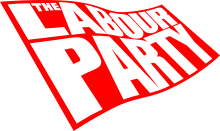
Foot resigned and was replaced as leader by Neil Kinnock, with Roy Hattersley as his deputy. The new leadership progressively dropped unpopular policies. The miners' strike of 1984–85 over coal mine closures, which divided the National Union of Mineworkers (NUM) as well as the Labour Party, and the Wapping dispute led to clashes with the left of the party, and negative coverage in most of the press.
The alliances which campaigns such as Lesbians and Gays Support the Miners forged between lesbian, gay, bisexual, and transgender (LGBT) and labour groups, as well as the Labour Party itself, also proved to be an important turning point in the progression of LGBT issues in the UK.[89] At the 1985 Labour Party conference in Bournemouth, a resolution committing the party to support LGBT equality rights passed for the first time with block voting support from the NUM.[90]
Labour improved its performance in 1987, gaining 20 seats and so reducing the Conservative majority from 143 to 102. They were now firmly re-established as the second political party in Britain as the Alliance had once again failed to make a breakthrough with seats. A merger of the SDP and Liberals formed the Liberal Democrats. Following the 1987 election, the National Executive Committee resumed disciplinary action against members of Militant, who remained in the party, leading to further expulsions of their activists and the two MPs who supported the group. During the 1980s radically socialist members of the party were often described as the "loony left", particularly in the print media.[91] The print media in the 1980s also began using the pejorative "hard left" to sometimes describe Trotskyist groups such as the Militant tendency, Socialist Organiser and Socialist Action.[92] In 1988, Kinnock was challenged by Tony Benn for the party leadership. Based on the percentages, 183 members of parliament supported Kinnock, while Benn was backed by 37. With a clear majority, Kinnock remained leader of the Labour Party.[93]
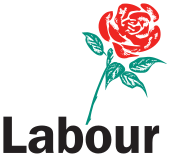
In November 1990 following a contested leadership election, Margaret Thatcher resigned as leader of the Conservative Party and was succeeded as leader and Prime Minister by John Major. Most opinion polls had shown Labour comfortably ahead of the Tories for more than a year before Thatcher's resignation, with the fall in Tory support blamed largely on her introduction of the unpopular poll tax, combined with the fact that the economy was sliding into recession at the time. The change of leader in the Tory government saw a turnaround in support for the Tories, who regularly topped the opinion polls throughout 1991 although Labour regained the lead more than once.
The "yo-yo" in the opinion polls continued into 1992, though after November 1990 any Labour lead in the polls was rarely sufficient for a majority. Major resisted Kinnock's calls for a general election throughout 1991. Kinnock campaigned on the theme "It's Time for a Change", urging voters to elect a new government after more than a decade of unbroken Conservative rule. However, the Conservatives themselves had undergone a change of leader from Thatcher to Major and replaced the Community Charge.
The 1992 general election was widely tipped to result in a hung parliament or a narrow Labour majority, but in the event, the Conservatives were returned to power, though with a much-reduced majority of 21.[94] Despite the increased number of seats and votes, it was a disappointing result for the Labour party. For the first time in over 30 years there was serious doubt among the public and the media as to whether Labour could ever return to government.
Kinnock then resigned as leader and was succeeded by John Smith.[95] Once again the battle erupted between the old guard on the party's left and those identified as "modernisers". The old guard argued that trends showed they were regaining strength under Smith's strong leadership. Meanwhile, the breakaway SDP merged with the Liberal Party. The new Liberal Democrats seemed to pose a major threat to the Labour base. Tony Blair (the Shadow Home Secretary) had a different vision to traditional Labour politics. Blair, the leader of the "modernising" faction, argued that the long-term trends had to be reversed, arguing that the party was too locked into a base that was shrinking, since it was based on the working-class, on trade unions, and on residents of subsidised council housing. Blair argued that the rapidly growing middle class was largely ignored, as well as more ambitious working-class families. Blair said that they aspired to become middle-class and accepted the Conservative argument that traditional Labour was holding ambitious people back to some extent with higher tax policies. To present a fresh face and new policies to the electorate, New Labour needed more than fresh leaders; it had to jettison outdated policies, argued the modernisers.[96] The first step was procedural, but essential. Calling on the slogan, "One Member, One Vote" Blair (with some help from Smith) defeated the union element and ended block voting by leaders of labour unions.[97] Blair and the modernisers called for radical adjustment of Party goals by repealing "Clause IV", the historic commitment to nationalisation of industry. This was achieved in 1995.[98]
Black Wednesday in September 1992 damaged the Conservative government's reputation for economic competence, and by the end of that year, Labour had a comfortable lead over the Tories in the opinion polls. Although the recession was declared over in April 1993 and a period of strong and sustained economic growth followed, coupled with a relatively swift fall in unemployment, the Labour lead in the opinion polls remained strong. However, Smith died from a heart attack in May 1994.[99] As of 2023[update], he is the last Labour leader not to have contested a general election (excluding acting leaders and the incumbent, whose tenure is ongoing).[nb 1]
New Labour (1994–2010)

Tony Blair continued to move the party further to the centre, abandoning the largely symbolic Clause Four at the 1995 mini-conference in a strategy to increase the party's appeal to "middle England". More than a simple re-branding, however, the project would draw upon the Third Way strategy, informed by the thoughts of the British sociologist Anthony Giddens.
New Labour was first termed as an alternative branding for the Labour Party, dating from a conference slogan first used by the Labour Party in 1994, which was later seen in a draft manifesto published by the party in 1996, called New Labour, New Life For Britain. It was a continuation of the trend that had begun under the leadership of Neil Kinnock. New Labour as a name has no official status, but remains in common use to distinguish modernisers from those holding to more traditional positions, normally referred to as "Old Labour".
New Labour is a party of ideas and ideals but not of outdated ideology. What counts is what works. The objectives are radical. The means will be modern.[100]
The Labour Party won the 1997 general election in a landslide victory with a parliamentary majority of 179; it was the largest ever Labour majority, and at the time the largest swing to a political party achieved since 1945. Over the next decade, a wide range of progressive social reforms were enacted,[101][102] with millions lifted out of poverty during Labour's time in office largely as a result of various tax and benefit reforms.[103][104][105]

Among the early acts of Blair's government were the establishment of the national minimum wage, the devolution of power to Scotland, Wales and Northern Ireland, major changes to the regulation of the banking system, and the re-creation of a citywide government body for London, the Greater London Authority, with its own elected-Mayor. Combined with a Conservative opposition that had yet to organise effectively under William Hague, and the continuing popularity of Blair, Labour went on to win the 2001 election with a similar majority, dubbed the "quiet landslide" by the media.[106] In 2003 Labour introduced tax credits, government top-ups to the pay of low-wage workers. A perceived turning point was when Blair controversially allied himself with US President George W. Bush in supporting the Iraq War, which caused him to lose much of his political support.[107] The UN Secretary-General, among many, considered the war illegal and a violation of the UN Charter.[108][109] The Iraq War was deeply unpopular in most western countries, with Western governments divided in their support[110] and under pressure from worldwide popular protests.[111] The decisions that led up to the Iraq war and its subsequent conduct were the subject of Sir John Chilcot's Iraq Inquiry (commonly referred to as the "Chilcot report").[112]
In the 2005 general election, Labour was re-elected for a third term, but with a reduced majority of 66 and popular vote of only 35.2%, the lowest percentage of any majority government in British history.[citation needed] During this election, proposed controversial posters by Alastair Campbell where opposition leader Michael Howard and shadow chancellor Oliver Letwin, who are both Jewish, were depicted as flying pigs were criticised as being anti-Semitic.[113] The posters were referring to the expression 'when pigs fly', to suggest that Tory election promises were unrealistic. In response, Campbell said that the posters were not in "any way shape or form" intended to be anti-Semitic.[114]

Blair announced in September 2006 that he would quit as leader within the year, though he had been under pressure to quit earlier than May 2007 in order to get a new leader in place before the May elections which were expected to be disastrous for Labour.[115] In the event, the party did lose power in Scotland to a minority Scottish National Party government at the 2007 elections and, shortly after this, Blair resigned as Prime Minister and was replaced by the Chancellor, Gordon Brown.[116][117] Although the party experienced a brief rise in the polls after this, its popularity soon slumped to its lowest level since the days of Michael Foot.[citation needed] During May 2008, Labour suffered heavy defeats in the London mayoral election, local elections and the loss in the Crewe and Nantwich by-election, culminating in the party registering its worst ever opinion poll result since records began in 1943, of 23%, with many citing Brown's leadership as a key factor.[118] Brown coordinated the UK's response to the 2007–2008 financial crisis.[119] Membership of the party also reached a low ebb, falling to 156,205 by the end of 2009: over 40 per cent of the 405,000 peak reached in 1997 and thought to be the lowest total since the party was founded.[120][121]
Finance proved a major problem for the Labour Party during this period; a "cash for peerages" scandal under Blair resulted in the drying up of many major sources of donations. Between January and March 2008, the Labour Party received just over £3 million in donations and were £17 million in debt, compared to the Conservatives' £6 million in donations and £12 million in debt.[122] These debts eventually mounted to £24.5 million, and were finally fully repaid in 2015.[123]
In the 2010 general election on 6 May that year, Labour with 29.0% of the vote won the second largest number of seats (258).[124] The Conservatives with 36.5% of the vote won the largest number of seats (307), but no party had an overall majority, meaning that Labour could still remain in power if they managed to form a coalition with at least one smaller party.[125] However, the Labour Party would have had to form a coalition with more than one other smaller party to gain an overall majority; anything less would result in a minority government.[126] On 10 May 2010, after talks to form a coalition with the Liberal Democrats broke down, Brown announced his intention to stand down as Leader before the Labour Party Conference but a day later resigned as both Prime Minister and party leader.[127]
Zdroj:https://en.wikipedia.org?pojem=Labour_Party_(UK)Text je dostupný za podmienok Creative Commons Attribution/Share-Alike License 3.0 Unported; prípadne za ďalších podmienok. Podrobnejšie informácie nájdete na stránke Podmienky použitia.
Antropológia
Aplikované vedy
Bibliometria
Dejiny vedy
Encyklopédie
Filozofia vedy
Forenzné vedy
Humanitné vedy
Knižničná veda
Kryogenika
Kryptológia
Kulturológia
Literárna veda
Medzidisciplinárne oblasti
Metódy kvantitatívnej analýzy
Metavedy
Metodika
Text je dostupný za podmienok Creative
Commons Attribution/Share-Alike License 3.0 Unported; prípadne za ďalších
podmienok.
Podrobnejšie informácie nájdete na stránke Podmienky
použitia.
www.astronomia.sk | www.biologia.sk | www.botanika.sk | www.dejiny.sk | www.economy.sk | www.elektrotechnika.sk | www.estetika.sk | www.farmakologia.sk | www.filozofia.sk | Fyzika | www.futurologia.sk | www.genetika.sk | www.chemia.sk | www.lingvistika.sk | www.politologia.sk | www.psychologia.sk | www.sexuologia.sk | www.sociologia.sk | www.veda.sk I www.zoologia.sk

